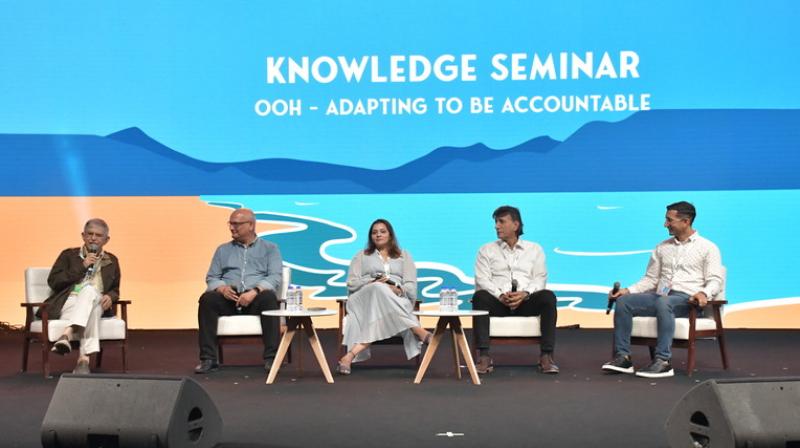The OOH industry has been going through some turmoil since the recent Ghatkopar hoarding collapse, which led to the death of 17 and injured 70.
Discussing the issues grappling the OOH world, the last day of Goafest saw an insightful session titled ‘OOH: adapting to be accountable.’ The panellists included Darshana Shah, head, marketing and customer experience, Aditya Birla Capital; Jahan Mehta, chief growth officer, OAP Mediatech; Pawan Bansal, COO, Jagran Engage and chairperson, Indian Outdoor Advertising Association; Noomi Mehta, chairperson of board, Selvel One Group. The session was moderated by Sam Balsara, chairperson, Madison World.
Balsara set the context for the panel by stating how the outdoor industry currently contributes 4% to the advertising spends in India. He told the audiences that he wants it to reach around 10% and asked the panellists for their view on how it can be achieved.
Shah opened the session by explaining how the outdoor medium has evolved.
“Today, outdoor can be your first go-to medium. Earlier, the big problem was measurement but now, we have RoadStar. We have a digital way of measuring. You have the data and you can do multi-screen geotagging. You can achieve that 10% target easily if you make outdoor more of a first medium and not just a recall medium. You can now also measure clickability. Like digital, outdoor is not a static medium anymore,” she said.
She added, “A lot of onus lies on the creative side as well on how to adapt to the medium and not just create an edit or static of the main messaging. Now, we also have CGI and anamorphic formats. The creative guys will have to come together and work on more and more outdoor and create interesting things.”
Citing the recent Ghatkopar hoarding collapse tragedy, Bansal spotlighted measures being taken by the IOAA to prevent such incidents.
He noted, “Over the years, I've been hearing the industry say that there is no data, no measurement and nothing more auto. So, now we made a dedicated effort to make a tool which the clients and agencies can use to plan an outdoor campaign. It will give you each frequency and impression. Once all the agencies start using it, we will see a drastic change in the whole ecosystem of the OOH industry. We regret the recent incident of the Ghatkopar hoarding falling and want that this is not repeated. The incident has shaken up the whole ecosystem.”
Urging agencies to buy OOH media from IOAA members only, Bansal said, “The paramount importance here is the safety of the citizens, advertisers, agencies and media owners. We want to bring more transparency to the business. For instance, what we are planning to do now is that we asked BMC to provide us with a list of all the sanction sites in the MCGM area, which we will publish on our website, so the client as well as the agencies know what they are dealing with. These are the few steps from the association. Going forward we have made a 100-day plan which encompasses all these things like measurability, adopting best practices and common standards as well as sustainability. We are going to implement all of that.”
Sharing his experience in OOH advertising, Jahan asserted, “We were one of the early adopters of RoadStar and we have seen a huge spike in our revenue, thanks to it. The tool has now taken the conversation away from that dreaded Excel sheet that had range, reach, frequency and impressions. So that's been a big plus.”
He also emphasised on the potential of automation and suggested, “We could get onto an automated sales platform where we can all see the availability of the site and we can go completely online.”
Focusing on how the industry can come together to overcome the challenges presented in the OOH space, Noomi noted, “If adaptability has to be explained, it can best be explained by an outdoor person. We had to adapt to changing circumstances. Now, finally, we have to adapt to find a system to regulate the regulators. For outdoor to prosper we have to manage the players who use political influence and money to bypass everything. India is a country which is facing this repeatedly in all spheres where people are bypassing the regulation system. The country and its citizens need to get serious about it. Stakeholders, media owners, agencies as well as the client need to understand that certain things must be off the table. You cannot and must not encourage them.”












